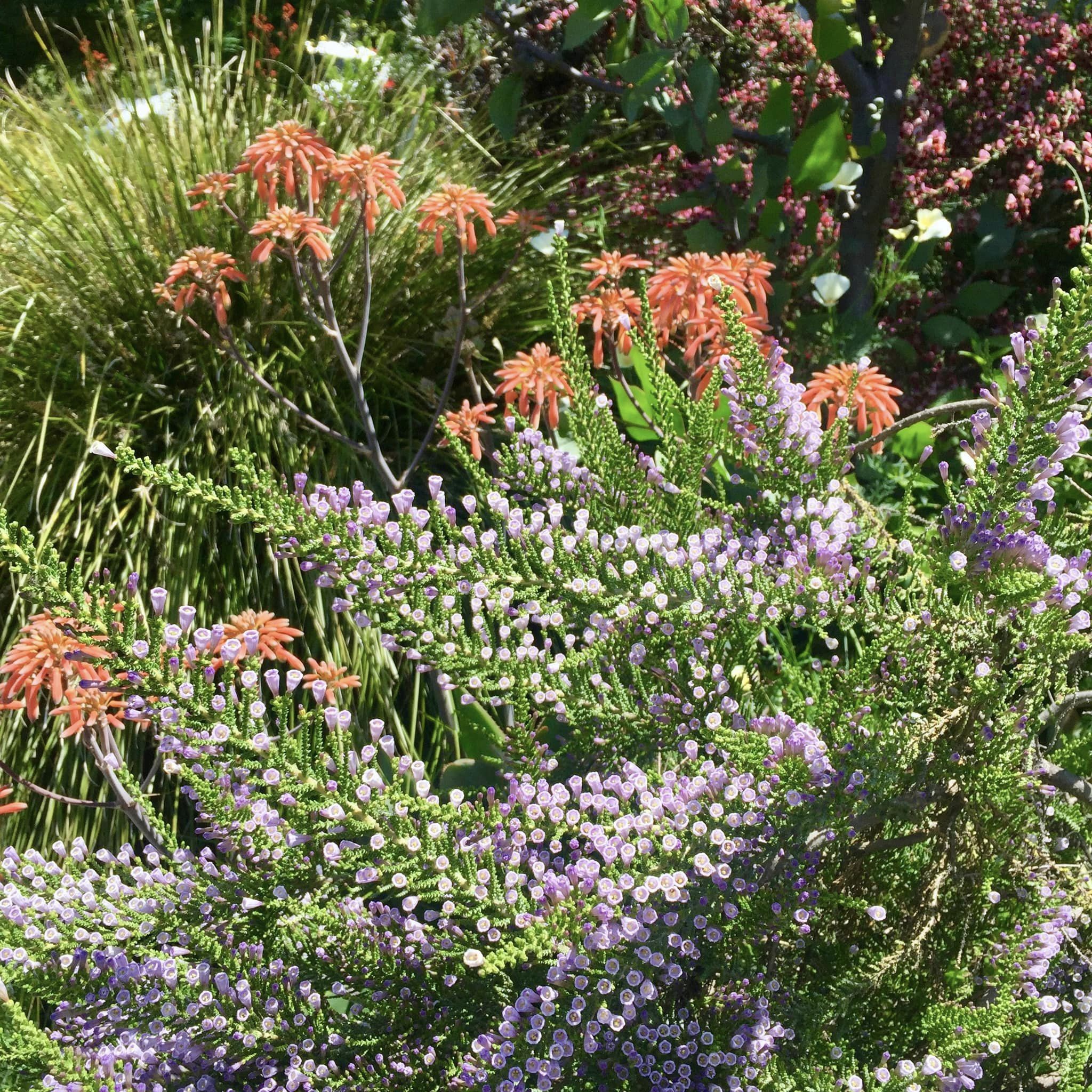Fellow garden enthusiasts, we have such a treat for you! We’re so excited to welcome the enchanting Waltzing Matilija Nursery, a treasure trove of botanical wonders nestled in Southern California which specializes in Australian and South African Plants. This nursery is a paradise for those who adore the rare and exotic. So, grab your sunglasses and a glass of something on ice, and let’s explore some of the nursery’s most covetable plants, along with their fascinating histories and the gardens they’ve graced around the globe.
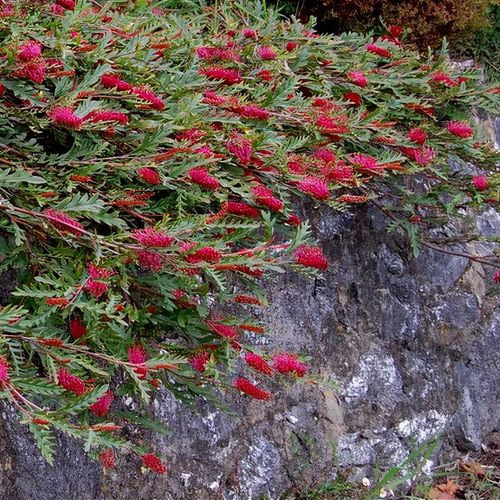
Grevillea ‘Fanfare’: The Cascading Beauty
First on our list is the stunning Grevillea ‘Fanfare’. With its vibrant red, spider-like flowers and delicate fern-like foliage, it’s a plant that’s sure to make a statement. It can grow to cover a 15′ area. Now that’s a groundcover! Native to Australia, Grevillea ‘Fanfare’ is cherished for its resilience and its ability to add both color and texture to gardens.
This delightful plant was introduced by the renowned horticulturist Peter Olde, a true aficionado of Grevilleas. You’ll find it flourishing in the Royal Botanic Garden in Sydney, where its vibrant blooms create a breathtaking display year-round.
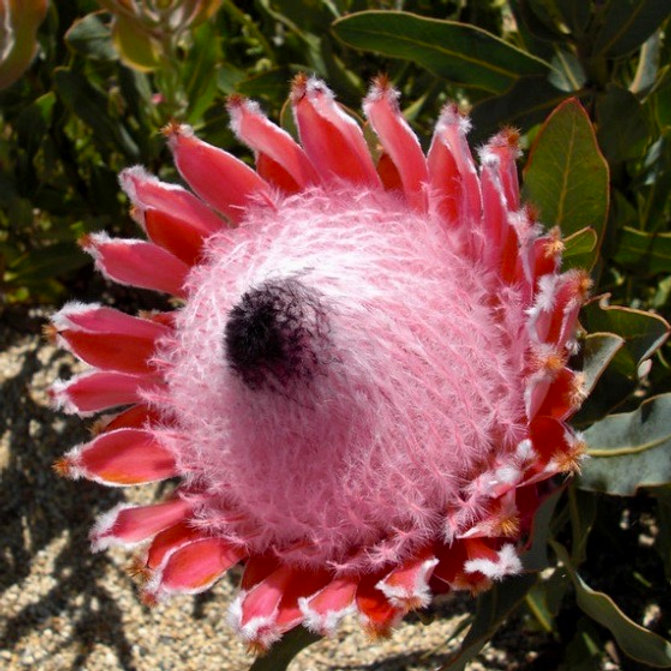
Protea magnifica: The King Protea
Next, we have the majestic Protea magnifica, also known as the queen protea. This South African native is celebrated for its large, dramatic blooms that look as though they’ve been plucked straight from a fairy tale. Each flower head is composed of hundreds of tiny individual flowers, surrounded by striking, colorful bracts. Esteemed garden designer Piet Oudolf has embraced the bold, architectural form of Protea magnifica in his renowned designs.
Waltzing Matilija has many stunning proteas but I chose to share this one with you because of its possible cold-hardiness and striking contrast between silvery foliage and vivid red blooms. WOWEEE!
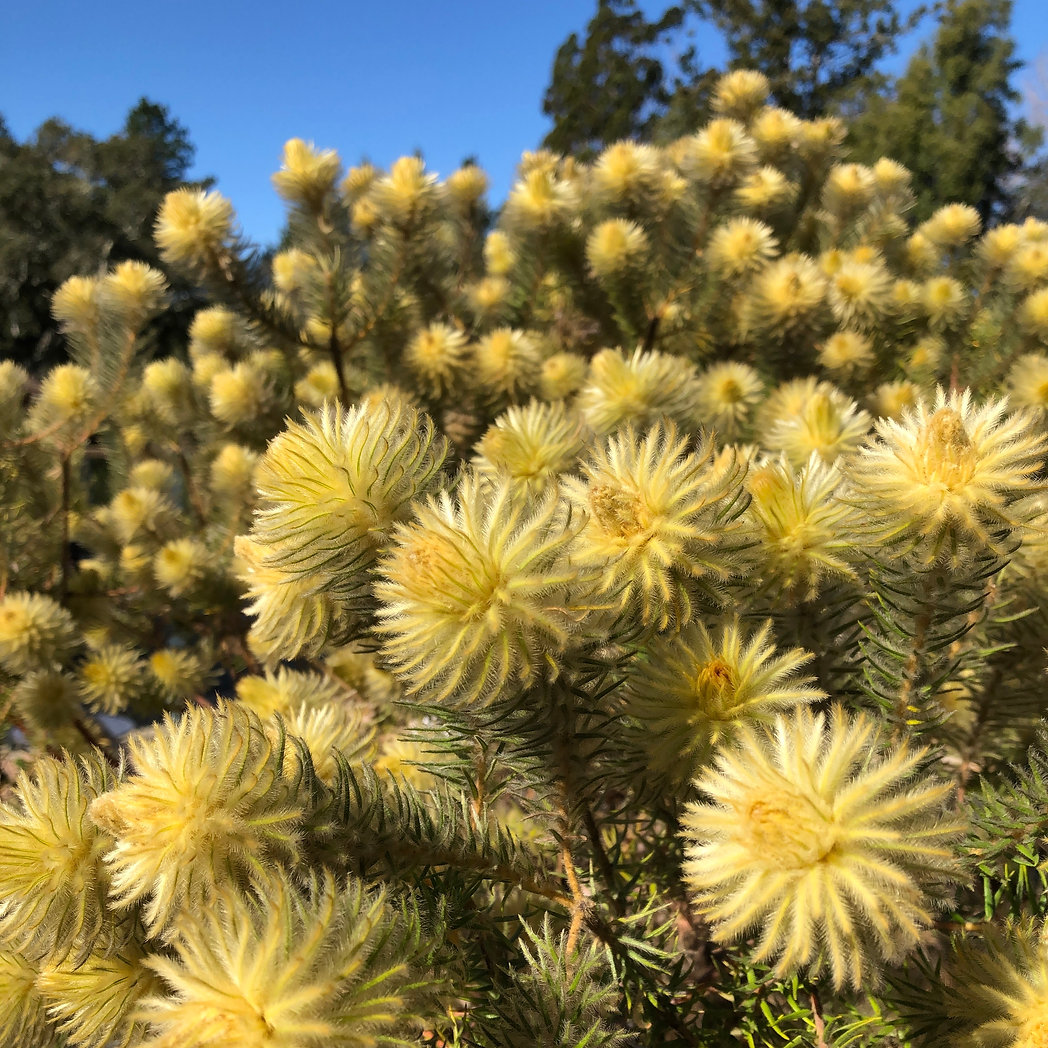
Phylica pubescens: Featherhead
Let’s move on to Phylica pubescens, affectionately known as featherhead. This charming plant brings a soft, downy texture to any garden. With its dense, velvety foliage and tiny, star-shaped flowers, it’s a unique and delightful addition to any plant collection.
What’s particularly quirky about Phylica pubescens is its irresistibly soft foliage. It’s so feathery, you’ll want to reach out and touch it every time you walk by. This plant has found a special place in Mediterranean gardens–just imagine the sun-catching capabilities of that fine foliage. No wonder it’s in such hot-demand at Annie’s Annuals who report that they often have long waiting lists for it. Apparently it’s very challenging to propagate.
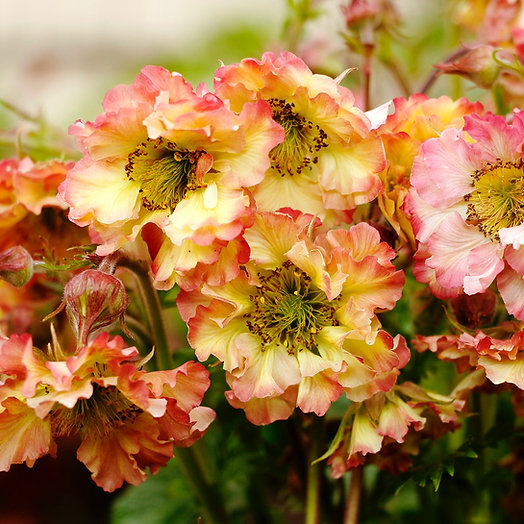
Geum Pretticoats™ Peach: The Delightful Perennial
Next up, Geum Pretticoat Peach. I feel like geums are much underused and I’m not sure why. Maybe too delicate to catch attention away from more boisterous flowers? I find them so charming. This one is a true delight, with its frilly peach-colored flowers and extended blooming season. It’s a relatively new cultivar but I think it will quickly catch on for its hardiness and popular flower color.
I’m happy to read that Geum Pretticoat Peach has been showcased in the renowned gardens of Great Dixter in England. Evidently the late, great garden designer Christopher Lloyd also had a particular fondness for geums, often using them to create vibrant, colorful borders. As usual, the English know.

Cussonia paniculata: The Cabbage Tree
Now, let’s talk about Cussonia paniculata, also known as the cabbage tree, or Dr Seuss Tree (ok, it’s only known by that name by me as far as I’m aware). I first saw this from the comfort of my bubble bath in a dogeared Annie’s Annuals catalog over a decade ago. Isn’t it just incredible–both charming and somewhat silly-looking? It hails from southern Africa and is celebrated for its unique, sculptural appearance. With its thick trunk and umbrella-like canopy of leaves, it certainly brings an exotic touch to any garden.
Cussonia paniculata has a storied history of use in traditional medicine among the indigenous peoples of southern Africa. You’ll find this striking plant featured in botanical gardens like the Pretoria National Botanical Garden, where its distinctive form never fails to capture the attention of visitors, I’m sure.
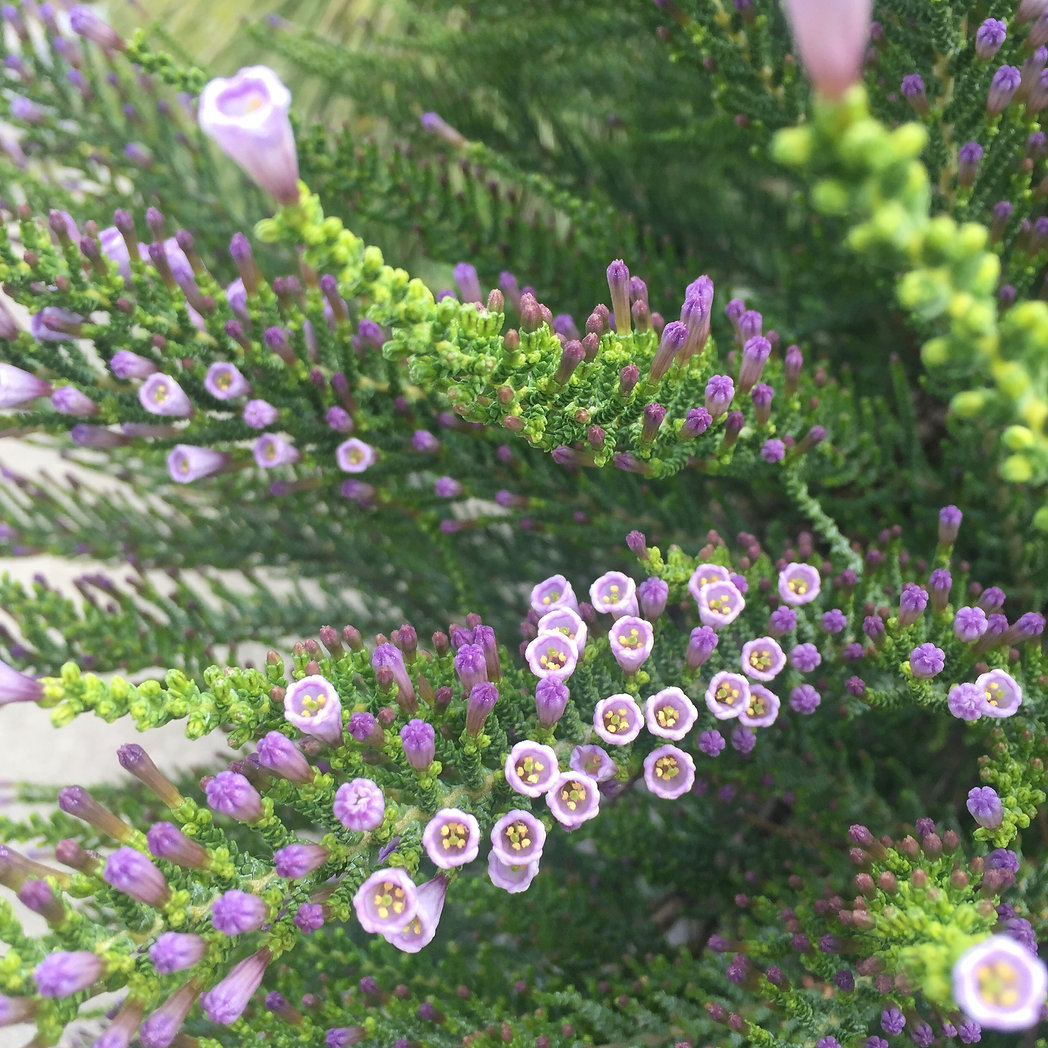
Fabiana imbricata f. violacea: The False Heather
Last but certainly not least, we have Fabiana imbricata f. violacea, or false heather. This Chilean native is beloved for its delicate, heather-like appearance and beautiful violet flowers. It’s a tough, drought-tolerant plant that thrives in Mediterranean climates.
Gertrude Jekyll, the legendary garden designer, was quite taken with this plant, admiring its fine texture and resilience. You can see it gracing the stunning gardens of Hestercombe in Somerset, England, where Jekyll’s influence continues to shine through.
Tips for Plant Care
To ensure your new botanical friends thrive, here are some care tips:
- Grevillea ‘Fanfare’ Plant in well-drained soil and full sun. It’s drought-tolerant but appreciates occasional watering.
- Protea magnifica Needs sandy, well-drained soil and full sun. Water sparingly; overwatering can be detrimental.
- Phylica pubescens Prefers well-drained soil and full sun to partial shade. It’s fairly drought-tolerant once established.
- Geum Pretticoats™ Peach Plant in well-drained soil and full to partial sun. Regular watering is essential during the growing season.
- Cussonia paniculata Thrives in well-drained soil and full sun. It’s drought-resistant but benefits from occasional deep watering.
- Fabiana imbricata f. violacea Needs well-drained soil and full sun. It’s low-maintenance and drought-tolerant.
Shop Waltzing Matilija Nursery
Ready to bring some of these fascinating plants into your own garden? Peruse all the Waltzing Matilija Nursery plants at plant lust.
